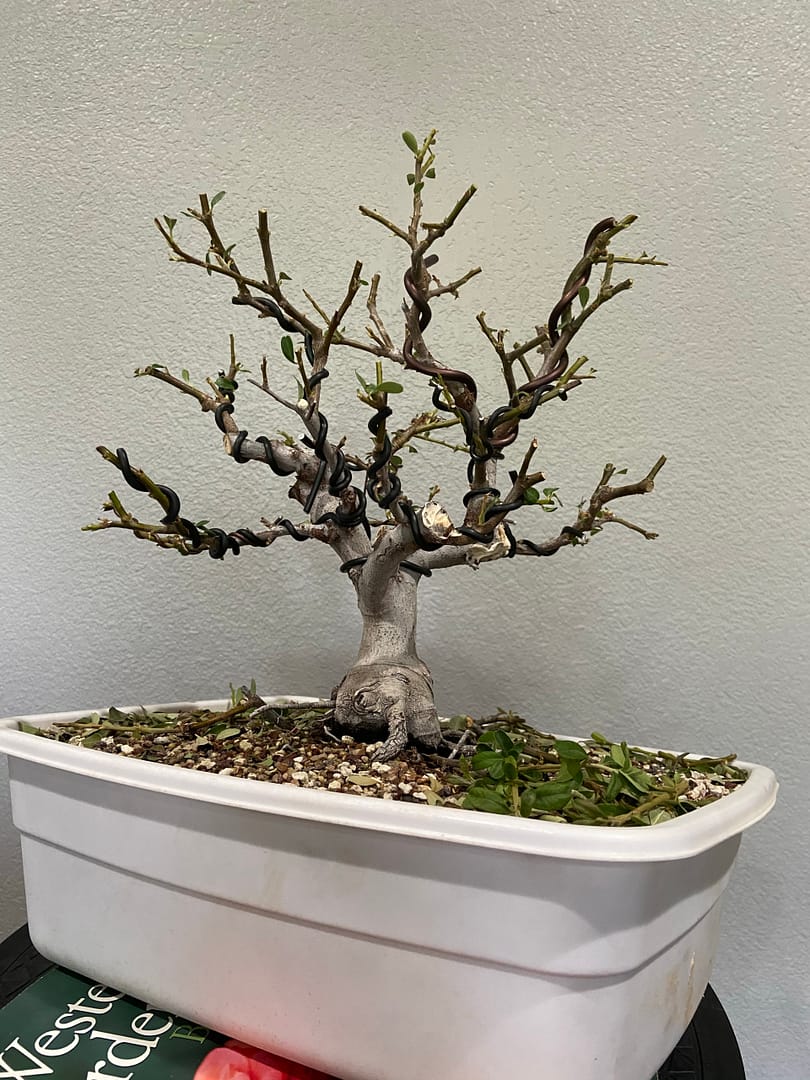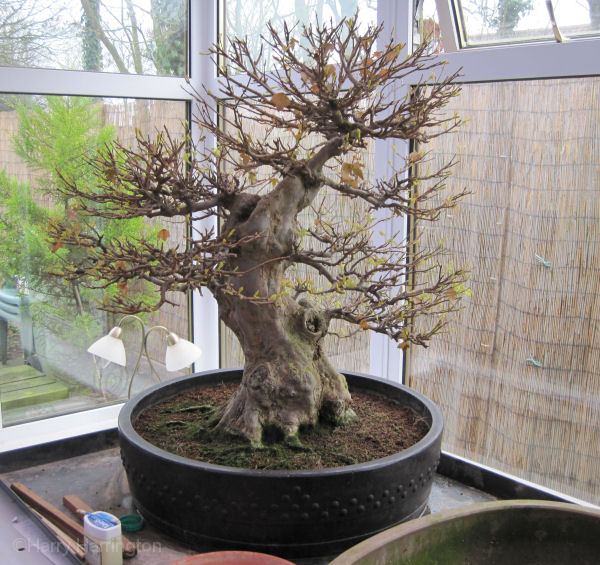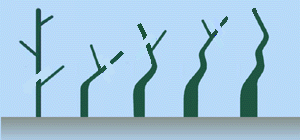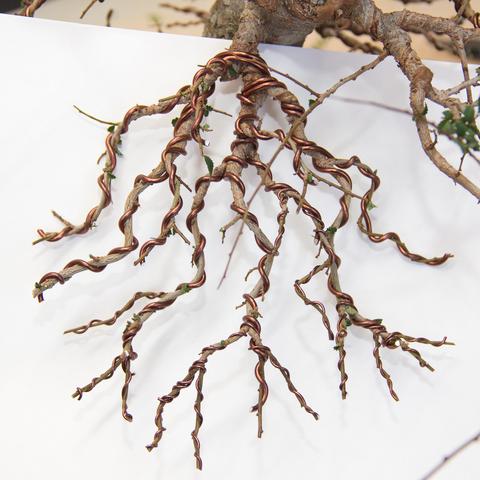
Many people want to immediately put a plant in a bonsai pot. Lets face it, who wouldn’t? It looks really cool. Hence our love of bonsai. Realizing what stage your tree is in before making rash decisions will help you receive a more long term satisfaction as opposed to the few days of glee before you kill your tree.
There are 2 stages that different parts of your tree can be in: Development and Refinement.
Development typically includes
- Energy accumulation and heavy fertilizing
- Building taper of the trunk and branching
- Primary and secondary branching structure
- Building root systems and nebari
- Healing large wounds
Refinement typically includes
- Controlled energy accumulation through regulated fertilizing
- Tertiary branching (aka ramification)
- Leaf size reduction
- Bonsai container
- Shorter internodes
Development
Trunk Thickness
The trunk thickens with time. The easiest way to think of this is to know that the more leaves on the tree, the faster the trunk will thicken. This allows more sugars and starches to be produced by the leaves. The vascular growth of the Fall is then able to store more energy and create a thicker trunk or branch.
Trees are typically grown in the ground (or called “Field Grown” trees) to maximize the speed with which the trunk grows by energy accumulation. By not limiting the potential root system you allow for faster development. This means if you put your tree in a bonsai pot you will not experience trunk thickening at a fast rate. While it will thicken, it will take anywhere from 3 to 10 times as long to accomplish a thickness compared to putting it in the ground or in a larger training pot.

Planting the tree in the ground ontop of a tile or a flat surface allows the roots to grow outward instead of downward which will result in a better nebari in the future, and the ability to be in a shallow pot when the refinement stage is at hand.
Another common technique used with certain species is called trunk chopping. This technique involves letting a tree grow a significant amount and chopping a large amount (typically 50% or more) of the trunk off and letting a new branch become the “leader” or the new trunk. This is how you acquire large trunks like this Trident Maple.
Developing Taper:
Taper is created by having the branch or trunk grow out and pruning back to a branch that is thinner than the current branch. This photo courtesy of Bonsaiexperience.com illustrates the process:

This is done with both the development of the trunk and the development of primary branches. To give your tree the appearance of age you need to incorporate taper.
Primary and Secondary Branching:
Your tree does not leave the development stage completely until you have primary branching that you’re happy with. Developing those branches at a size that is proportional to the trunk will take a solid amount of growth that won’t come as quick in a bonsai pot undergoing refinement.
Nebari and Root Systems:
Regularly pruning the roots over the years gives you the opportunity to develop the radial roots and remove any downward growing roots.
Refinement
Energy Management:
Fertilizing too heavily while trying to refine your tree will lead to a tree that is well below its potential. To get shorter internodes and smaller leaves you have to give the tree just enough energy to push out a little bit more.
This idea is perfectly demonstrated by defoliation. You cut off the trees ability to produce energy, so naturally it says “I need those!” and responds by putting out new leaves. The catch here is that the tree doesn’t have as much energy (or any potential to create more energy) and therefore puts out smaller leaves. If you follow up by fertilizing heavily, the next Spring you’ll observe larger leaves.
Ramification:
This comes by pruning the tree regularly to a point where it branches out or where there are multiple buds. This can be problematic when heavily fertilizing the tree as is needed in development stages.

Defoliation:
Leaf sizes can be reduced when desired on certain species by removing the foliage. This uses the stored energy in the tree to push out another flush of growth that cannot reach the same size of the previous leaves. This also can be problematic if you’re heavily fertilizing.
Internode Length
This happens when you decrease the fertilizer and overall energy the tree has. Inserting the tree in a bonsai container also helps with this as it limits the overall vigor the tree can amount.
Bonsai Container:
Restricting the root growth on a tree is one part of smaller internodes, smaller leaves, and refined branching. If you’re trying to refine part of your tree and develop another, you’ll have a hard time getting any thickening in a certain point in comparison to others.
